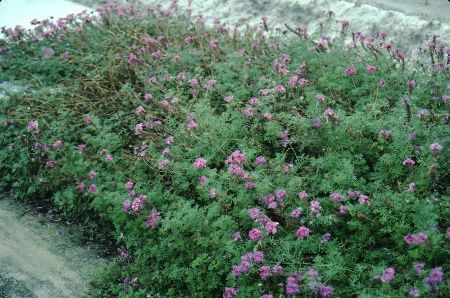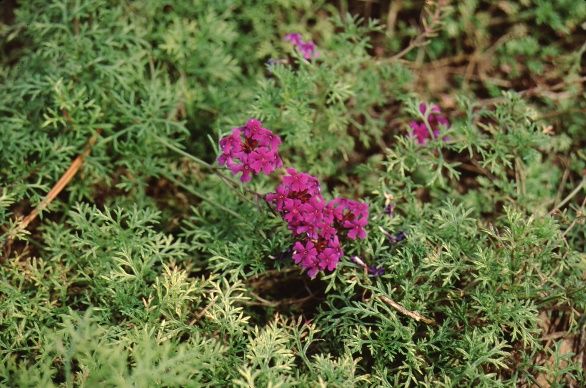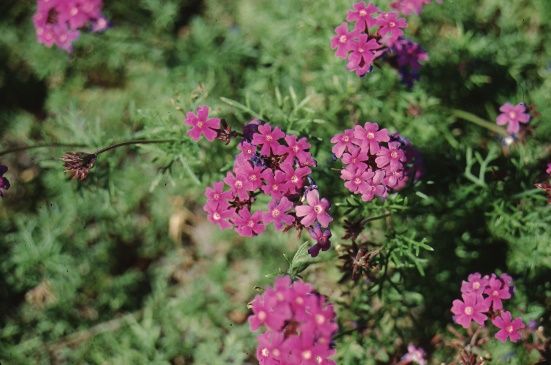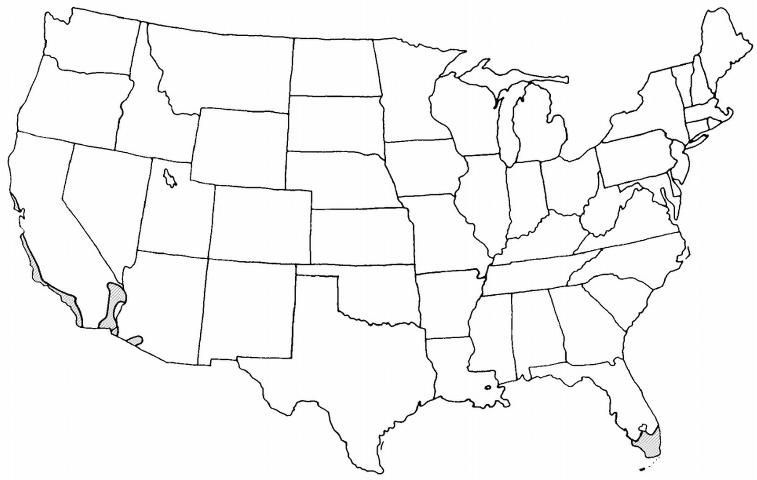Introduction
This verbena is a perennial well suited for Florida landscapes, especially those that receive infrequent irrigation. It won the All American Selections award in 1993. Deep violet-blue or purple flowers borne in clusters at the top of this 12-inch-tall ground cover stand out against the soft, fine-textured foliage. They cover the plant with purple. Stems creep along the ground and root to bind the soil together, helping prevent erosion.

Credit: Edward F. Gilman, UF/IFAS

Credit: Edward F. Gilman, UF/IFAS

Credit: Edward F. Gilman, UF/IFAS
General Information
Scientific name: Verbena speciosa 'Imagination'
Pronunciation: ver-BEEN-nuh spee-see-OH-suh
Common name(s): 'Imagination' verbena
Family: Verbenaceae
Plant type: perennial; herbaceous; ground cover
USDA hardiness zones: 10 through 11 (Figure 4)
Planting month for zone 10 and 11: Feb; Mar; Apr; May; Jun; Jul; Aug; Sep; Oct; Nov; Dec
Origin: not native to North America
Invasive potential: aggressive, spreading plant
Uses: mass planting; ground cover; attracts butterflies; cascading down a wall; hanging basket
Availability: generally available in many areas within its hardiness range

Credit:
Description
Height: 1 to 1.5 feet
Spread: 3 to 5 feet
Plant habit: spreading
Plant density: moderate
Growth rate: moderate
Texture: fine
Foliage
Leaf arrangement: opposite/subopposite
Leaf type: simple
Leaf margin: lobed
Leaf shape: variable
Leaf venation: pinnate
Leaf type and persistence: semi-evergreen; evergreen
Leaf blade length: less than 2 inches
Leaf color: green
Fall color: no fall color change
Fall characteristic: not applicable
Flower
Flower color: purple; violet-blue
Flower characteristic: flower season is longer in zones 9-11; spring flowering; summer flowering
Fruit
Fruit shape: unknown
Fruit length: unknown
Fruit cover: unknown
Fruit color: unknown
Fruit characteristic: inconspicuous and not showy
Trunk and Branches
Trunk/bark/branches: not applicable
Current year stem/twig color: green
Current year stem/twig thickness: thin
Culture
Light requirement: plant grows in full sun
Soil tolerances: acidic; alkaline; sand; loam; clay
Drought tolerance: high
Soil salt tolerances: unknown
Plant spacing: 24 to 36 inches
Other
Roots: not applicable
Winter interest: no special winter interest
Outstanding plant: plant has outstanding ornamental features and could be planted more
Pest resistance: long-term health usually not affected by pests
Use and Management
To establish a solid ground cover, plant about 4 feet apart. Stems creep along the soil and plants will form a complete cover, 18 to 24 months after planting. Plant in the full sun for fastest growth and best flowering. Foliage remains dark green with little or no care once plants are established. Occasional fertilizer applications will help keep the foliage green and will promote flowering.
Verbena tenuisecta is very similar.
Pests and Diseases
Few problems should impact this verbena.